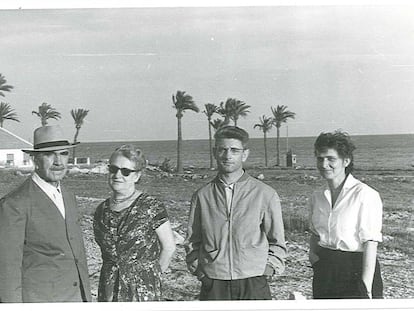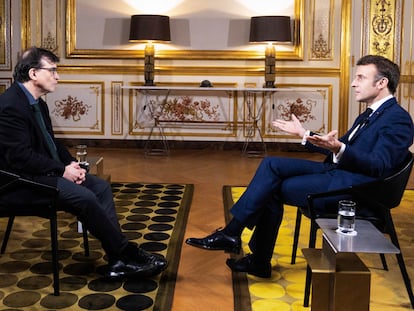As a fully integrated EU member, Croatia turns the page on its turbulent past
Ten years after becoming part of the European Union, the Balkan nation joins the euro and the Schengen zone

Snow is falling on the house where Communist revolutionary Tito was born in the small Croatian village of Kumrovec (population 1,600), near the border with Slovenia. It has been less than a month since Croatia rang in the New Year as a fully integrated European Union (EU) member. The statue of the man who ruled Yugoslavia for 35 years after World War II, looks down at the entrance to his old home, which has been turned into a museum. But Croatia’s four million citizens are looking forward – there is no time for nostalgia, not even in this town, where more than 100,000 tourists come every year to visit the birthplace of Josip Broz, commonly known as Tito.
Less than a minute’s drive from Tito’s house is a border crossing to Slovenia. Truckers used to wait two or three hours to cross, but now there are no police or guards at the border post. Croatia’s 58 border posts with Slovenia and 15 with Hungary are all wide open now, says Croatia’s Ministry of the Interior. Croatian authorities believe that full integration into the EU will be entirely beneficial. But all this didn’t just start on January 1. Boris Vujčić, the governor of Croatia’s central bank, says that the years-long process of adopting the euro and joining the Schengen visa-free zone enabled it to overcome the problems brought on by the Covid-19 crisis in 2020 and Russia’s invasion of Ukraine last year. “We were better able to cope with pressures on foreign exchange and government bond markets,” said Vujčić.
Other officials expect that increased tourism will benefit the entire country, not just the cities along its famous Adriatic coast. Martina Bienenfeld, the head of the Zagreb Tourist Board, says that the capital city and the country as a whole recorded its highest ever number of visits for the first two weeks in January, 3% more than the previous high in 2019. Bienenfeld says that Zagreb’s emergence as a tourist destination began in 2013, when the country first joined the EU. “Before then, we were one of the most boring cities in Europe for nightlife. People from here traveled to Belgrade [Serbia] to have fun. Now, people from Belgrade come here because we are green, safe and European.”
Robert Šplajt, the 45-year-old mayor of Kumrovec (northern Croatia), believes full EU integration will bring in more tourists, more Slovenian investors, and more European financing for projects like a railway connecting Croatia and Slovenia. But Šplajt also laments the slow pace of crucial reforms. He says wages are too low and food prices too high, which has driven 200 people from Kumrovec to move elsewhere. Many of them cross the border daily to work in Slovenia. “In our neighboring country, nurses can earn €1,800 [$1,960 per month], while here the maximum is barely €1,000 [$1,100],” said Šplajt.
Croatia has lost 10% of its population since joining the EU. Šplajt says that many young Croatians left for Ireland, Germany and other EU countries. “Migrants started coming in from other Balkan countries, but later left to earn more money elsewhere. For the last two years, we have had Asian workers coming from places like Nepal and Bangladesh.”
Exports and tourism
Kresimir Sever is president of the Independent Trade Unions of Croatia, the country’s second-largest labor union in membership. Sever says that the average wage in the country is €870 ($947) a month, and the minimum is €557 ($606) a month. “Labor unions have been attacked because they say we are against foreign workers. But we are only against low wages and temporary worker contracts.” Sever can’t recall the country’s current unemployment rate (6.7% in November 2022). “Unemployment is not a problem in Croatia,” he said. “The problem is finding workers.”
The labor leader believes that joining the euro and the Schengen area will boost exports and tourism, which account for 20% of the country’s gross domestic product (GDP). Spain is another country that relies heavily on these two sectors, but they only account for 12% of its GDP. Sever criticizes the government for failing to anticipate price hikes by companies exploiting the switch to the euro from the kuna (the former national currency). “We advised the government to establish a blacklist of price-gougers, but they ignored us. The government is now threatening to implement one, but it’s too late… We are handicapped by a weak political opposition and the lack of large businesses that can propel our society forward.”
Some people in former president Tito’s hometown of Kumrovec are very critical of the government. Dragutin Ulama was the mayor before his friend and current mayor Robert Šplajt took office. Ulama owns a company that employs nine people, and doesn’t think that full EU integration will change Croatia much. “There will be more money coming in from Europe, but that will bring more corruption. In this country, there’s a glass ceiling for young people who want to work in the public sector because you can’t get jobs without connections. The best electricians, carpenters, plumbers and bricklayers have all left. Politicians often can’t finish their public works projects because there are no skilled workers anymore in Croatia.”
Zvonimir Frka-Petešić is the chief of staff for Prime Minister Andrej Plenković. He says that the justice, health, and education systems need to be reformed before corruption can be effectively curbed, and believes that Croatia’s current path was hindered by the 1990s war that broke up the nation of Yugoslavia. “Our focus back then was to gain independence and establish an army. We can’t criticize anyone for pointing out a problem, but sometimes they don’t see the forest for the trees.”
If one could see the entire forest, says Frka-Petešić, the Plenković administration’s efforts to develop an independent judicial system would be better appreciated. “The system has not been afraid to put members of the executive branch on trial. This was almost unthinkable before this administration [which took office in 2016].”
The Plenković administration was heavily criticized for the slow pace of reconstruction of homes destroyed by two earthquakes in 2020 (in Petrinja and Zagreb). The country risks losing EU funding if certain projects are not completed by June. Plenković just appointed a new construction minister, Branko Bačić, the third person to hold that post in the last two years.
The big challenge
Croatia’s participation in the Schengen visa-free zone will mean that the country of four million will have to control 843 miles (1,357 kilometers) of borders, more than 70% of which adjoin the country of Bosnia and Herzegovina, which is not yet a member of the EU. Irregular migrants regularly cross into Croatia from Serbia and Bosnia and Herzegovina. “The Slovenians say that since the beginning of the year, 500-600 irregular migrants have arrived in their country from Croatia,” said Šplajt.
Several international non-governmental organizations (NGOs) have denounced the abuse and torture of migrants by Croatian police. Sara Kekus, a manager with the Centre for Peace Studies in Zagreb, says that her organization provided evidence in 2021 of masked police officers beating migrants. “There have been no more cases of torture since then, but migrants are still subjected to violence and degrading treatment,” she said. Deputy Prime Minister and Interior Minister Davor Božinović says Croatia has already invested “a great deal” in securing its borders. “But it’s a never-ending effort,” he said. “We need to keep improving our technical capabilities to detect migrants before they get to our borders.”
According to Božinović, a key control measure will be harmonizing the EU visa regime with that of Serbia and Bosnia and Herzegovina. He says that people from other countries can easily travel to Belgrade and Sarajevo, and then enter Croatia illegally. “Until last year, we didn’t see migrants coming from Cuba,” said Božinović. “And not only Cuba, but also people from Burundi, India and many other African countries, such as Congo, Sierra Leone and more.” Another new trend in 2022 are all the Russians seeking asylum. “We had up to 2,000 Russian asylum seekers in one year,” said Božinović.
It’s a new era for Croatia, as Tito might have said. Most of the people in Kumrovec and throughout the country are hopeful about the changes ahead and the new horizons that the newly opened borders are bringing into view.
Sign up for our weekly newsletter to get more English-language news coverage from EL PAÍS USA Edition
Tu suscripción se está usando en otro dispositivo
¿Quieres añadir otro usuario a tu suscripción?
Si continúas leyendo en este dispositivo, no se podrá leer en el otro.
FlechaTu suscripción se está usando en otro dispositivo y solo puedes acceder a EL PAÍS desde un dispositivo a la vez.
Si quieres compartir tu cuenta, cambia tu suscripción a la modalidad Premium, así podrás añadir otro usuario. Cada uno accederá con su propia cuenta de email, lo que os permitirá personalizar vuestra experiencia en EL PAÍS.
¿Tienes una suscripción de empresa? Accede aquí para contratar más cuentas.
En el caso de no saber quién está usando tu cuenta, te recomendamos cambiar tu contraseña aquí.
Si decides continuar compartiendo tu cuenta, este mensaje se mostrará en tu dispositivo y en el de la otra persona que está usando tu cuenta de forma indefinida, afectando a tu experiencia de lectura. Puedes consultar aquí los términos y condiciones de la suscripción digital.
More information
Últimas noticias
A survivor’s account of the Interoceanic Train accident: ‘We were scared because of the speed on the curve’
The Interoceanic Train, the Mexican alternative to the Panama Canal
What is known about the Interoceanic Train derailment in Oaxaca
Trump turns a Minnesota fraud allegation into ammunition for his MAGA army against Democrats
Most viewed
- Oona Chaplin: ‘I told James Cameron that I was living in a treehouse and starting a permaculture project with a friend’
- Reinhard Genzel, Nobel laureate in physics: ‘One-minute videos will never give you the truth’
- Why the price of coffee has skyrocketed: from Brazilian plantations to specialty coffee houses
- Pablo Escobar’s hippos: A serious environmental problem, 40 years on
- Chevy Chase, the beloved comedian who was a monster off camera: ‘Not everyone hated him, just the people who’ve worked with him’











































